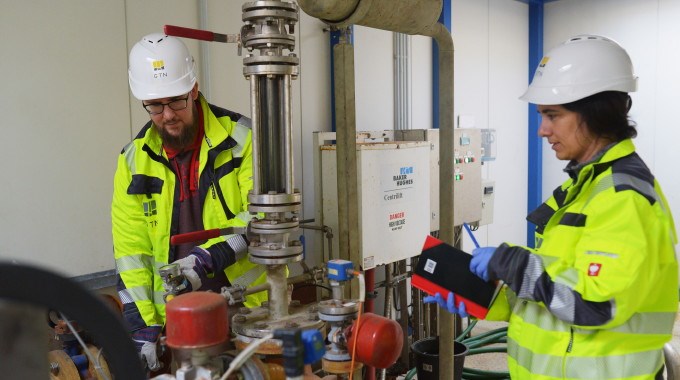Aquifer Heat Storage for a Gas and Steam Turbine Power Plant in Neubrandenburg
Efforts to minimise the use of primary energy by combining various energy conversion processes (e.g. CHP) are often hampered by a seasonal gap between energy supply and demand. Efficient long-term heat and cold storages that can be installed at low specific costs could remedy the situation.
In Neubrandenburg, where a gas and steam turbine power plant with an electrical output of 77 MW is operated, the deep sursurface serves as a thermal energy storage. In summer, waste heat from the power plant, which would otherwise have been destroyed by the cooling tower, is injected into the underground. For this purpose, water at approx. 45 °C is taken from a 1,200 m deep well ("cold storage side") and injected into another well after heating ("warm storage side"). The distance beween the wells is about 1,300 m. Due to the injection of warm water an artificial "geothermal zone" is formed. In winter, the direction of flow in the system is reversed. The heat now extracted from the “warm storage side” has a temperature of approx. 85 °C at the beginning of the heating period and almost 75 °C at the end of the extraction period. The heat is fed into a low-temperature system where it displaces the operation of the gas burners in the peak-load boilers.

Role
- Numerical simulation of the aquifer thermal energy store (ATES) operation
- Planning, tendering and construction supervision for the ATES incl.wells, associated piping construction, electrical engineering and automation
- R&D and permanent monitoring of operating data, water, scales and materials used